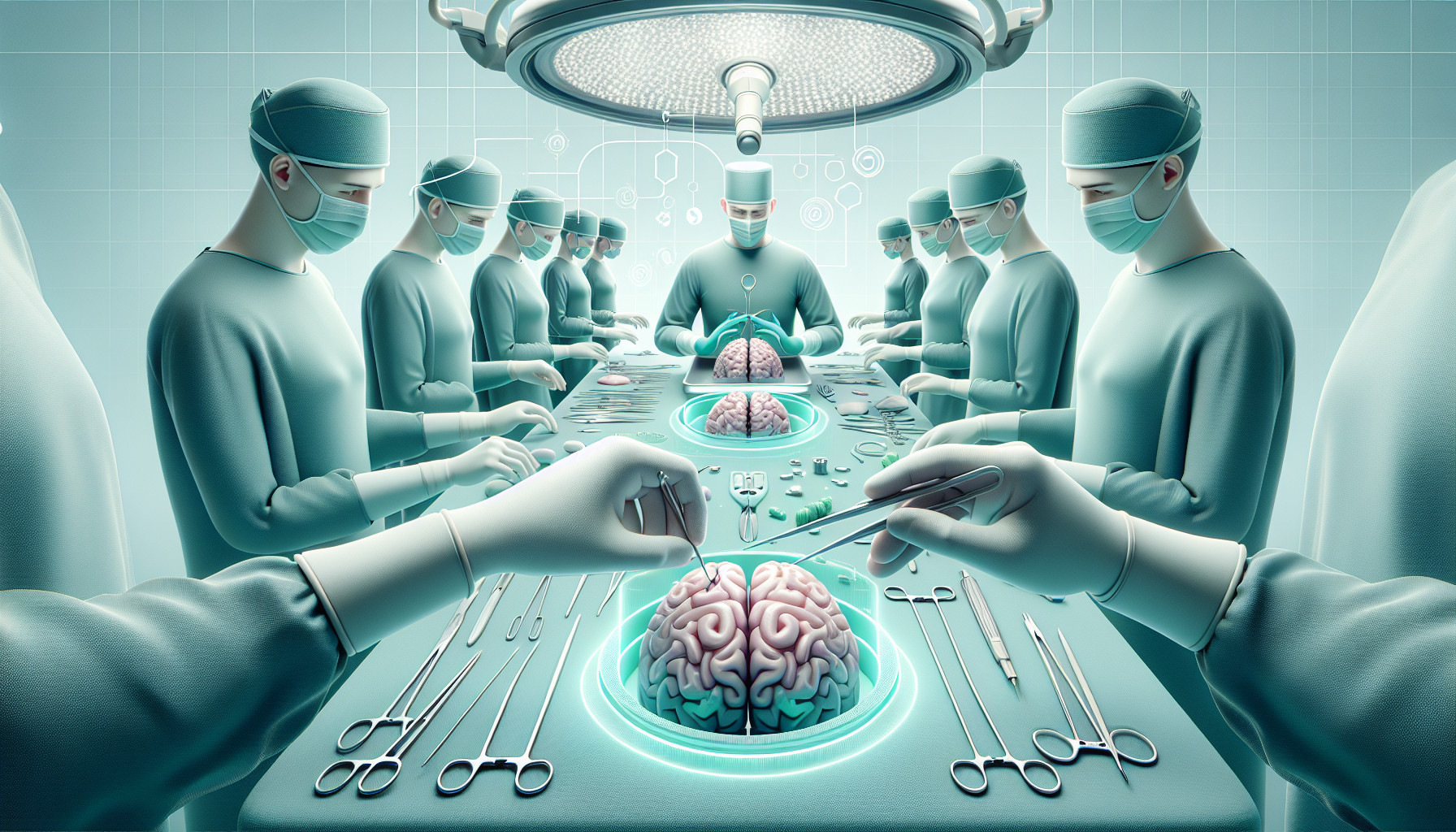Our Summary
This research paper is about a study done on a new way to perform deep brain stimulation (DBS) surgery. DBS surgery is often done in two stages, first putting an electrode into the brain, and then later putting in a pulse generator. However, this can be difficult for some patients who can’t stay awake during surgery. The researchers tested a new system that allows doctors to do both parts of the surgery at once while the patient is asleep.
The new system uses a “key” that’s attached to the skull, instead of a large frame that goes around the head. This new system was approved by the US FDA. The researchers used this new system on eight patients and found it to be safe and effective. After surgery, CT scans confirmed that the electrodes were placed correctly.
In conclusion, the new system can be used to perform DBS surgery in one stage while the patient is asleep, and it meets the traditional accuracy standards for placing electrodes in the brain.
FAQs
- What is the new method proposed for performing deep brain stimulation surgery?
- How does the new system for DBS surgery differ from the traditional method?
- Has the new system for DBS surgery been approved by the FDA and tested for effectiveness?
Doctor’s Tip
A helpful tip a doctor might tell a patient about brain surgery is to follow all pre-operative instructions carefully, such as fasting before surgery and avoiding certain medications. It is also important to have a support system in place for post-operative care and recovery. Additionally, maintaining open communication with your healthcare team and asking any questions or expressing concerns you may have can help ensure a successful outcome.
Suitable For
Patients who are typically recommended for brain surgery include those with neurological conditions such as Parkinson’s disease, essential tremor, dystonia, epilepsy, and obsessive-compulsive disorder. These patients may have tried other treatments that have not been effective, and their symptoms may be significantly impacting their quality of life. Patients who are experiencing severe symptoms that are not well controlled with medication may also be recommended for brain surgery.
Additionally, patients who are deemed to be good candidates for surgery are those who are in overall good health and do not have any other medical conditions that would make surgery risky. They must also have realistic expectations about the potential outcomes of the surgery and be willing to comply with post-operative care and follow-up appointments.
It is important for patients to undergo a thorough evaluation by a multidisciplinary team of healthcare providers, including neurologists, neurosurgeons, psychiatrists, and neuropsychologists, to determine if they are suitable candidates for brain surgery. The decision to undergo brain surgery is a complex and individualized process that takes into account the patient’s specific medical history, symptoms, and overall health.
Timeline
Before the surgery:
- Patient consults with a neurosurgeon and undergoes various tests to determine if they are a candidate for DBS surgery.
- Patient discusses risks and benefits of the surgery with their healthcare team and makes a decision to proceed.
- Patient undergoes pre-operative evaluations and tests to ensure they are healthy enough for surgery.
During the surgery:
- Patient is put under general anesthesia.
- Surgeons use the new system to place the electrode in the brain while the patient is asleep.
- The pulse generator is also implanted during the same surgery.
- The surgery typically lasts several hours.
After the surgery:
- Patient wakes up in the recovery room and is monitored closely for any complications.
- Patient may experience pain, swelling, and discomfort at the surgical site.
- Patient is typically discharged from the hospital a few days after surgery.
- Patient undergoes follow-up appointments with their healthcare team to monitor their progress and make any necessary adjustments to the DBS settings.
- Patient may undergo rehabilitation and physical therapy to help with recovery and optimize the benefits of the DBS surgery.
What to Ask Your Doctor
What specific benefits does this new system offer compared to the traditional two-stage surgery?
What are the potential risks or complications associated with this new system?
How experienced is the surgical team in using this new system for DBS surgery?
How long is the recovery time expected to be with this new system compared to the traditional two-stage surgery?
Are there any specific criteria or considerations that make a patient a good candidate for this new system?
Will I still need to have follow-up appointments or adjustments after the surgery with this new system?
How does the cost of using this new system compare to the traditional two-stage surgery?
Are there any ongoing studies or research being conducted on the long-term outcomes of using this new system for DBS surgery?
Can you provide me with any patient testimonials or success stories from individuals who have undergone DBS surgery using this new system?
What is the expected lifespan of the pulse generator used in this new system, and how will it be monitored or replaced over time?
Reference
Authors: Scheitler KM, Rusheen AE, Yuen J, Goyal A, Hong S, Osman GM, Sharaf B, Klassen BT, Grewal SS, Miller KJ, Shin H, Oh Y, Lee KH. Journal: J Neurosurg. 2024 Mar 15;141(2):406-411. doi: 10.3171/2024.1.JNS232563. Print 2024 Aug 1. PMID: 38489816
